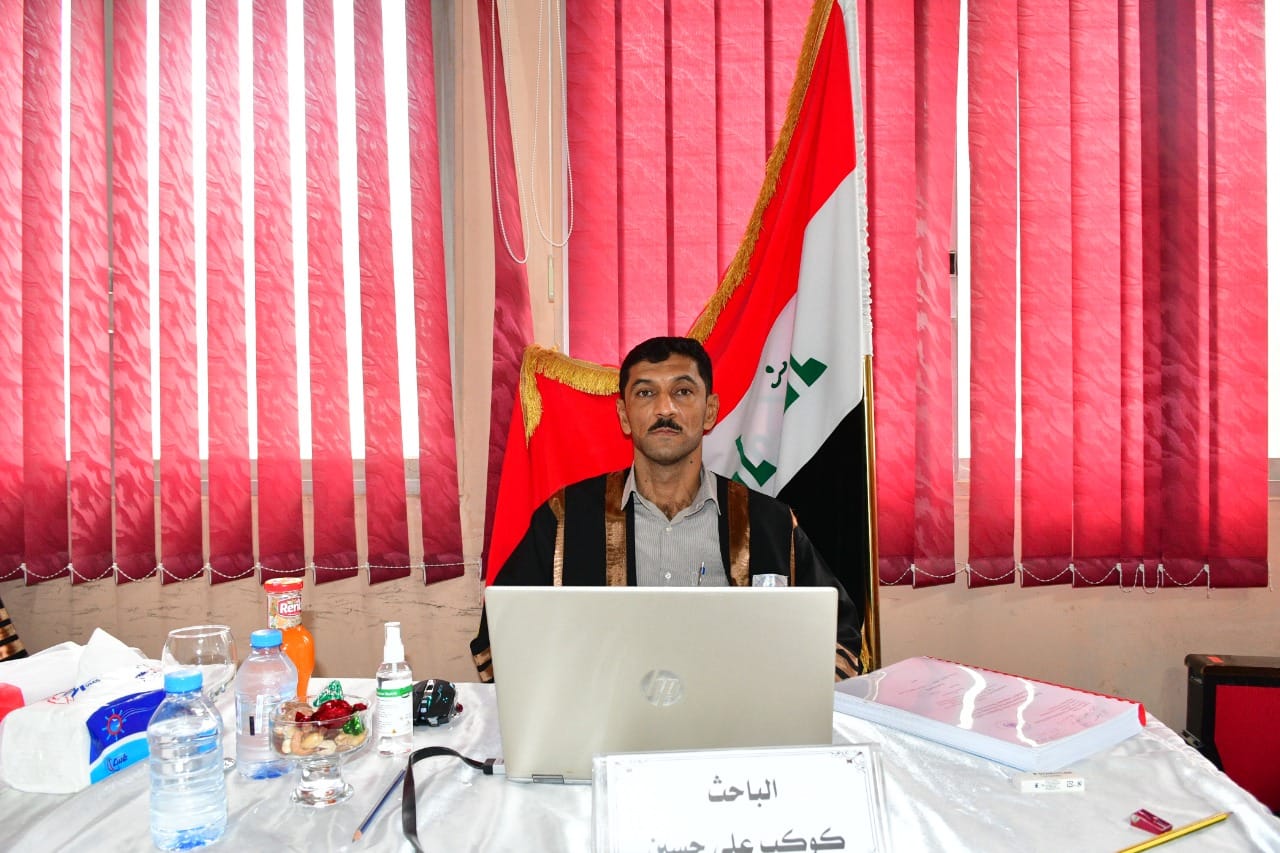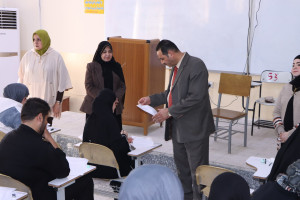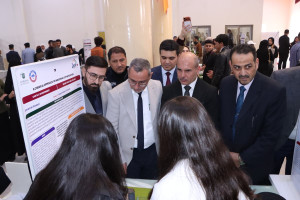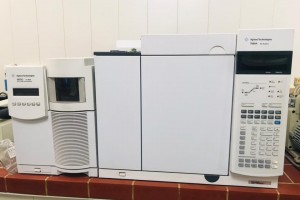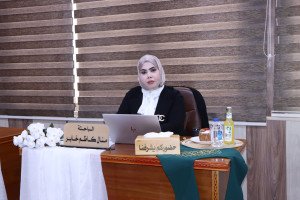
The College of Education for Pure Sciences, Department of Chemistry, discussed a doctoral thesis on the study of gallons, methods of preparation, and their biological and research applications.
The thesis presented by the researcher (Kawkab Ali Hussein) included the study divided into three sections. The first section includes the synthesis and characterization of the compounds, while the second section studies the biological activity and evaluation of its effectiveness against cancer, bacteria, fungi and osteoporosis. As for the third section, the theoretical study was divided into two parts, the first part includes the study of Dukink, while the second part includes the study of the values of chemical displacements and the constants of pairing.
The compounds were characterized by infrared spectra, proton and carbon-13 nuclear magnetic resonance spectra, mass spectrometry, in addition to studying some compounds by biaxial nuclear magnetic resonance spectra. All analyzes proved the validity of the chemical compositions of the compounds and that they have a trans status
The second part included a study of biological activity, where some prepared compounds were tested against 6 types of human cancer cells, which are:
(Hepg2, AMD-MA-231, HCT116, MCF-7, A549, A-375)
The two compounds CH7 and CH9 showed good activity against Hepg2 and the CH7 compound was chosen to study the mechanism of inhibition by flow cytometry and cell cycle examination. The percentages of late apoptosis were 7.04% and 5.74% compared to the control Q2 3.95%, while the cycle analysis showed a change and a decrease in the G1 and G1 stages. S with an increase in the G2 concentration phase, where it was found that the CH7 compound stops the hepatocellular carcinoma cycle at G2/M, meaning programmed cell death occurs. While compounds CH2, CH3
And CH4 showed activity against cancer cells. AMD-MA-231 On the other hand, none of the compounds that were tested against (HCT116, MCF-7, A549 and A-375) showed any activity. The effectiveness of chalcones against bacteria and fungi was also evaluated, and the results showed ineffectiveness against bacteria, while they showed effectiveness against fungi. On the other hand, compounds CH7, CH9 and E1 showed activity against osteoporosis.
